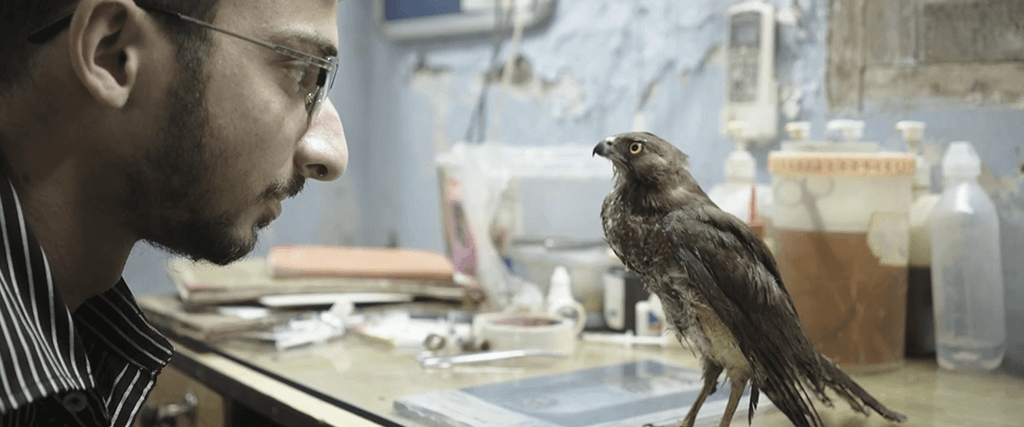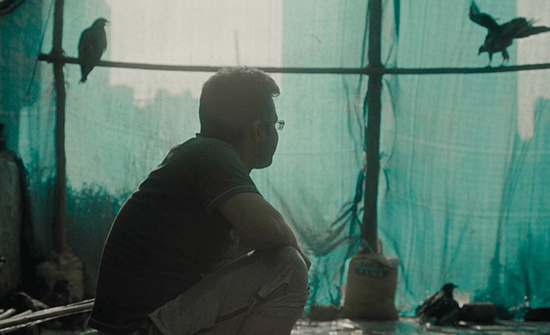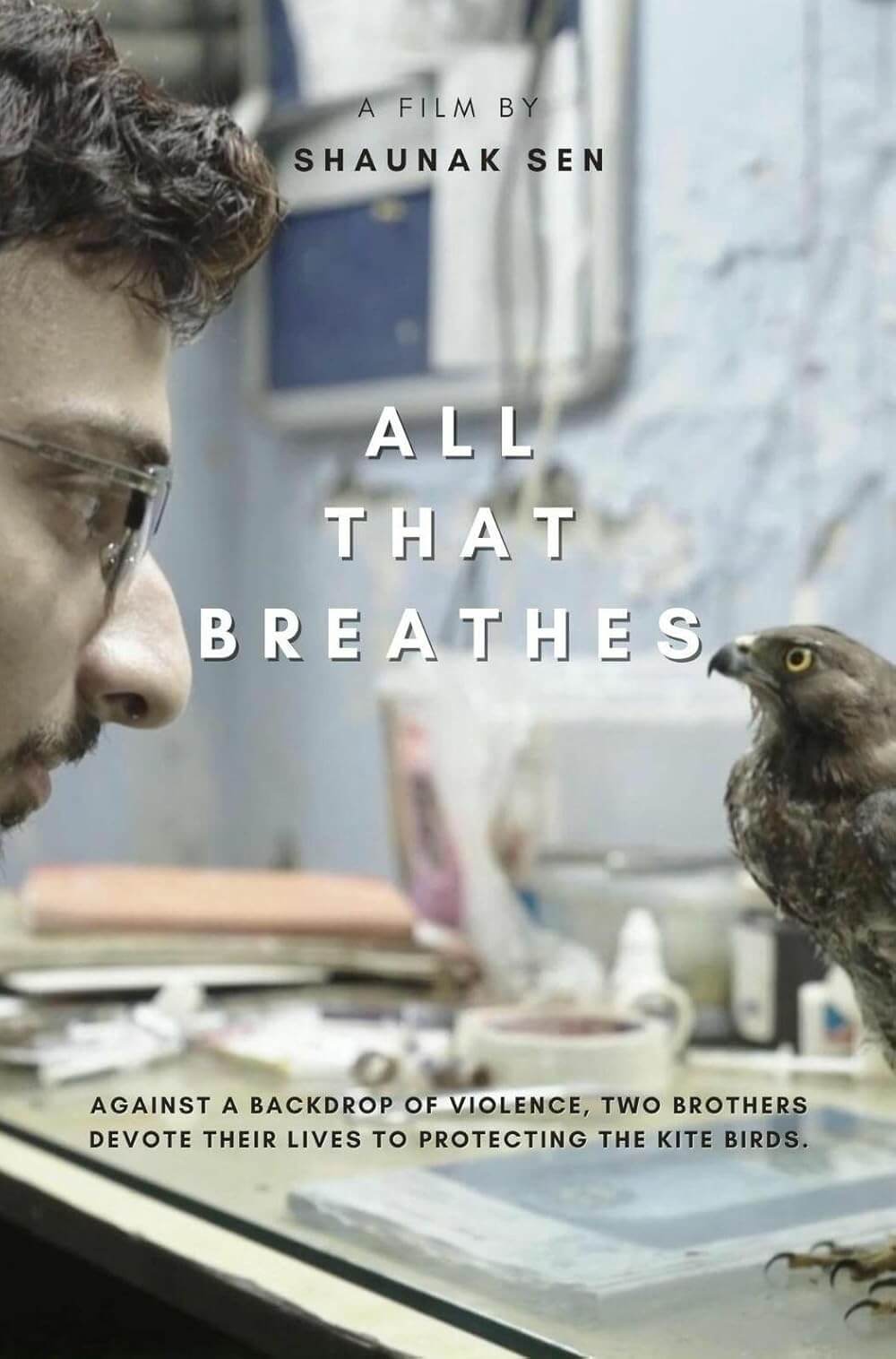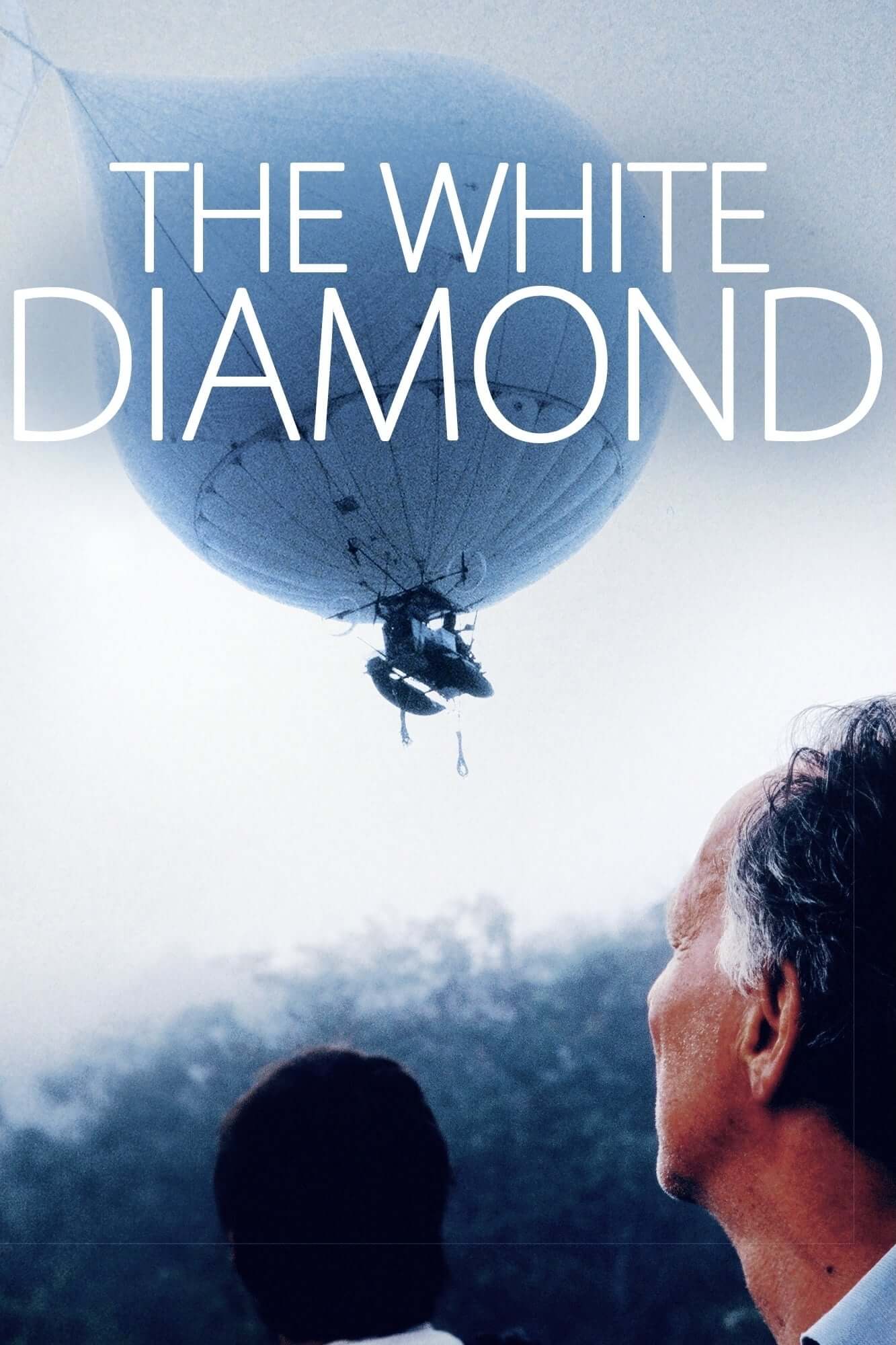
All That Breathes
By Brian Eggert |
“Hundreds of birds falling out of the sky every day,” observes Nadeem Shehzad, who, along with his brother Mohammad Saud and associate Salik Rehman, operate a bird clinic in Wazirabad, New Delhi. “What amazes me is that people go on as if everything’s normal.” The brothers founded their clinic, Wildlife Rescue, over 20 years ago and operate out of the same basement where their family runs a liquid soap dispenser business. All of their free time and waking thoughts go to black kites and their rehabilitation, if indeed these birds of prey can survive. But because of rampant industrialization and humanity’s impact on the environment, the kites have had to either adapt or, more commonly, die in countless numbers. All That Breathes, a gorgeously filmed but heartbreaking documentary by Shaunak Sen, showcases the efforts of Wildlife Rescue while also considering their naturalist worldview. It’s not an environmentalist diatribe nor a documentary with a clearly stated call to action, as so many modern docs prove to be. Instead, its heart is more open than that.
The first shots look over a vacant lot teeming with rats and refuse. Cars pass by on the road in the background while rodents scrounge for food in the foreground, giving the viewer the willies. The camerawork—shot by Ben Bernhard, Riju Das, and Saumyananda Sahi—often deploys slow pans that offer not a vérité-style look at reality but a searching quality that recalls Werner Herzog’s documentaries. In Herzog’s films, he considers the sublimity of Nature against the holy fools who attempt to master it, evidenced in The White Diamond (2004) and Grizzly Man (2005). Sen’s subjects find the natural inhabitants of New Delhi struggling in the urban landscape, and they’re treated with the same amount of wonder, respect, and visual poetry as Herzog might apply. The film adopts the outlook of the Wildlife Rescue staff, who have committed their lives to helping the unloved black kite, seen as a pest and scavenger among locals. Hundreds of them soar above, but few people besides the clinic’s staff show much concern over the kites’ wellbeing within New Delhi’s highly populated and industrial spaces.
“The kite swims,” reflects Nadeem in awe, and his affection for the birds is infectious. Covered in brown feathers with random white spots, the black kites serve a cultural function for those in New Delhi. “They eat your difficulties. And their hunger is insatiable.” Maybe Nadeem sees a spiritual exchange for his work, hinted at when he admits to dreams of dying only to have kites burst out of his chest. Unfortunately, other local wildlife organizations committed to helping birds remain unconvinced and reject Nadeem’s grant requests for financial support because the kites are “non-vegetarian,” and therefore undesirable. So, the Wildlife Rescue receives cardboard boxes with birds inside daily. The staff attempts to help where they can, fixing birds with ailments like metabolic bone disease, broken limbs, malnutrition, or rampant parasites. They also provide temporary shelter and arrange for vast bags of meat and discarded organs, minced into mush suitable for the birds—except, in the scene where they try to process the kite food on a hot day, their machine breaks down. Indeed, the underfunded group must endure countless practical issues, from power outages to outdated equipment to sewage floods during the monsoon season.
 Around their small building in New Delhi, protests and violence create a volatile environment from the ongoing conflicts between Hindus and Muslims. The human world is so preoccupied with itself that only Sen’s camera seems to notice the garbage dumps where birds, wild dogs, and even the occasional turtle call home. “Delhi is a gaping wound,” Nadeem remarks, and Wildlife Rescue is little more than a Band-Aid. Still, the kites show some ability to adapt to their surroundings. After treating thousands of birds, the workers have found that kites use cigarette butts to ward off parasites. It’s a depressing innovation that signals how, as Nadeem notes, “humanity is now their natural environment,” and a new form of natural selection is underway. But the staff can help only so much, such as when Mohammad and Salik swim out to an island in cold waters to rescue a single kite. Not that the birds show their gratitude—one scene features a kite zooming by Salik’s head, snatching his glasses in its beak.
Around their small building in New Delhi, protests and violence create a volatile environment from the ongoing conflicts between Hindus and Muslims. The human world is so preoccupied with itself that only Sen’s camera seems to notice the garbage dumps where birds, wild dogs, and even the occasional turtle call home. “Delhi is a gaping wound,” Nadeem remarks, and Wildlife Rescue is little more than a Band-Aid. Still, the kites show some ability to adapt to their surroundings. After treating thousands of birds, the workers have found that kites use cigarette butts to ward off parasites. It’s a depressing innovation that signals how, as Nadeem notes, “humanity is now their natural environment,” and a new form of natural selection is underway. But the staff can help only so much, such as when Mohammad and Salik swim out to an island in cold waters to rescue a single kite. Not that the birds show their gratitude—one scene features a kite zooming by Salik’s head, snatching his glasses in its beak.
Against so much adversity and impossible stakes, one has to wonder whether or not they can really have a positive impact. Are their efforts hopeful or merely delaying the inevitable? On days when Nadeem must bury over a dozen birds, their work seems Sisyphean. All That Breathes doesn’t suggest that they have a solution or that they can even solve the problem in our lifetimes. It seems optimistic when Nadeem heads to the US for a research opportunity, and he promises to support the Wildlife Rescue website and proposals remotely. But so much of what they do remains hands-on. The film isn’t about activism or raising awareness of a problem. It’s about imparting the message that all life matters, no matter how insignificant or uncute. As the title indicates, All That Breathes has a profound respect for Nature, no matter how unpleasant certain critters may be to human beings. “Life itself is kinship,” we’re told, and everything living on Earth demands the same respect.
Told with gorgeous yet often putrid imagery that underscores the film’s meaning, All That Breathes is a documentary that argues for Nature within a larger ecosystem, equalizing humanity with the rats, fungi, and scavenger birds. The lack of human ego on display is inspiring, even if Nadeem and his fellow clinic workers function as Herzogian holy fools. But instead of heading out into the untamed wilderness to conquer the impossible, these holy fools take on the impossible task of preserving Nature in the face of humanity’s complete disregard. Without telegraphing its themes or providing onscreen schematics to inform the viewer, All That Breathes offers a way of thinking that demonstrates the difference just a few committed people can make. On those terms, it’s a more effective environmentalist message and warning than most other documentaries that overemphasize their thesis.
(Note: After originally debuting at the Sundance Film Festival in 2022, All That Breathes arrives on HBOMax on February 7, 2023.)

Unlock More from Deep Focus Review
To keep Deep Focus Review independent, I rely on the generous support of readers like you. By joining our Patreon community or making a one-time donation, you’ll help cover site maintenance and research materials so I can focus on creating more movie reviews and critical analysis. Patrons receive early access to reviews and essays, plus a closer connection to a community of fellow film lovers. If you value my work, please consider supporting DFR on Patreon or show your support in other ways.
Thank you for your readership!
Brian Eggert | Critic, Founder
Deep Focus Review







